What is it about the monsoon that draws us in so deeply? For me, it’s the smells—an irresistible wave of nostalgia and calm. It’s the scent of coffee whilst watching the rain or the smell of a book that hasn’t been touched in a while. But most of all, it’s the scent of rain itself—petrichor. That earthy, comforting fragrance as the first raindrops hit the parched soil. It’s a smell we wait for, season after season, holding onto the promise of relief from the heat, just like farmers who yearn for it to nourish their crops or poets who see it as a muse for creation.
But what if you didn’t have to wait? What if you could capture that fleeting scent of rain, hold it in your hands, and revisit it anytime you wanted? This might sound like a dream, but it’s real. There’s a place in India where the art of bottling petrichor has been perfected. Forget designer perfumes; this is nature’s finest.
Naturally, as someone obsessed with fragrances, I had to visit this place. So, I booked a cab from Lucknow, Uttar Pradesh, and set off on a journey that took me through rolling fields, small villages, and vibrant patches of greenery. As I stepped out of the cab, a heady mix of aromas welcomed me into the narrow, bustling lanes of Kannauj—India’s perfume capital. The air itself seemed alive with history and tradition, a place where every bottle holds centuries of craftsmanship and stories.
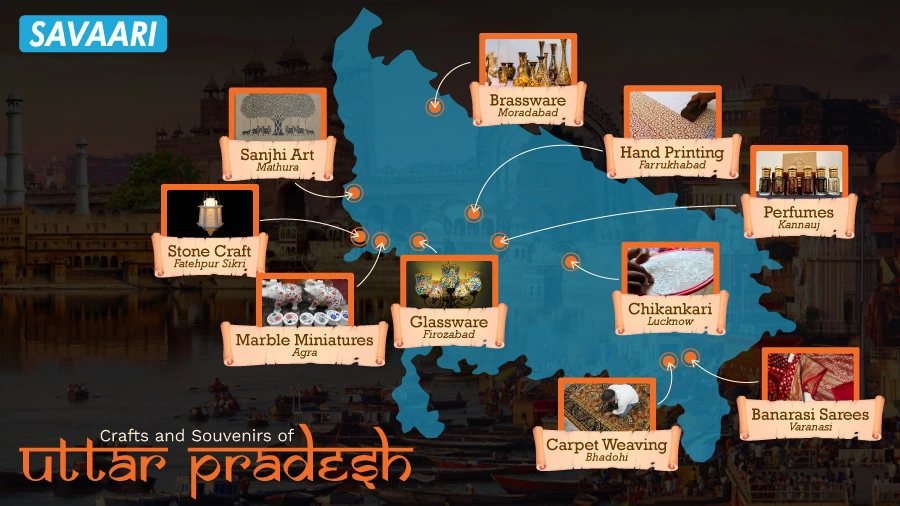
Fragrant secrets of Kannauj – A journey through attars and tradition
If you ask anyone what Kannauj is famous for, a quick zoom into the Kannauj map will guide you to the Kannauj district, one of India’s most ancient regions known for its rich archaeological and cultural heritage. But you’ll only truly understand what Kannauj is famous for once you visit and experience its unique charm—where one of your six senses, smell, takes center stage in Kannauj perfume city.
As I strolled through the narrow, timeworn lanes of Baba Gauri Shankar Road in Kannauj perfume city, the air was rich with layers of fragrances, all competing for attention. My mind was focused on one particular scent—the mysterious perfume that captures the smell of rain. When I asked a shopkeeper if he sold this intriguing fragrance, he smiled and said, “It’s called mitti attar.” He explained that attars are oil-based fragrances, unlike the alcohol-laden sprays we commonly call perfumes.
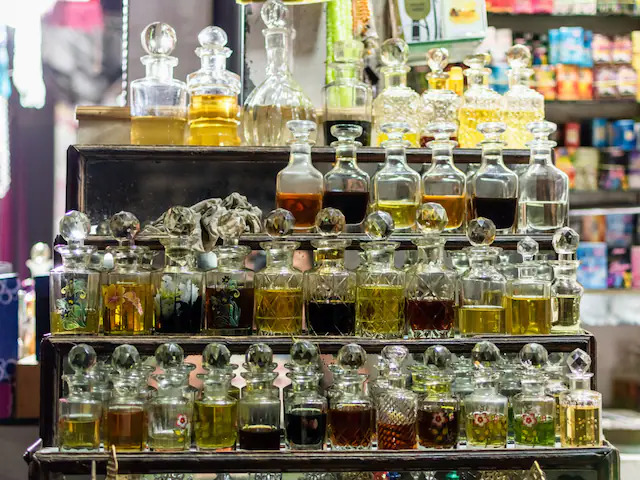
As I glanced around his shop, I was mesmerized by the range of fragrances—rose, jasmine, sandalwood, oud, musk, saffron—each one more divine than the last. The shopkeeper shared that Kannauj’s perfumers have mastered this craft over centuries, using clay, flowers, and oils distilled in massive copper cauldrons heated over wood fires. It’s an ancient process that has been passed down through generations, capturing the very essence of nature in a bottle. And so, my journey into the world of mitti attar truly began.
The scent of legacy – Exploring Kannauj’s liquid gold
I was already familiar with the rich artistic heritage of Uttar Pradesh, so the region’s craftsmanship didn’t surprise me much. However, I was particularly intrigued by the craft of perfumery. The shopkeeper, Rakesh, sensing my curiosity, asked his teenage daughter Pushpa to guide me further. He knew I had countless questions, and she could show me where mitti attar is created. Pushpa, sharp and insightful, explained that Kannauj is one of the few places in India that still produces Kannauj attar—known locally as “itr”—without a trace of artificial ingredients.
She shared how, for over 400 years, Kannauj perfume city has carried the torch of India’s perfume-making tradition. The unique Kannauj weather and fertile soil provide the perfect conditions for cultivating the herbs and flowers that are essential for creating this aromatic marvel. She affectionately referred to the Kannauj attar as taral sona, or ‘liquid gold,’ a reflection of its value.
As we walked, she began to recount the history of Kannauj perfume city and its craftsmanship—how this small city earned its title as the perfume capital of India, its legacy stretching back centuries, shaped by both nature and the skill of its artisans. And so, I learnt about the rich past that makes Kannauj perfumes an indelible part of India’s cultural heritage.
Kannauj – From the Indus Valley to the Mughal Dynasty
During a road trip to the Indus Valley sites in Gujarat, I discovered that the origins of fragrance-making in India traced back to the Indus Valley Civilization, where the distillation and storage of aromatic materials were first practised. Archaeological findings, including terracotta distillation apparatus, reveal that perfume-making was not only practised but deeply intertwined with spiritual rituals. Fragrant waters were initially created as offerings to the gods, before evolving into personal perfumes.
The Gupta period – The rise of Kannauj
Kannauj’s prominence in the world of fragrances began to flourish during the Gupta Period (4th to 6th centuries). Historical records, such as those by Huan Tsang, speak of the widespread use of perfumes across North India. Ptolemy even referred specifically to Kannauj’s burgeoning perfume industry. So central was this craft to the city that King Harshavardhan renamed it Kusumpura—the city of flowers. In the 7th century AD, Kannauj was also known as Kanyakubja, or the ‘city of hunchbacked maidens.’
The Mughal Era – A golden age for Kannauj attars
Although the tradition of attar stretches back millennia, it w as under the Mughal rule in the 16th century that the art of perfumery truly thrived. Persian and Turkish influences shaped this era, and Emperor Akbar’s love for fragrances was well-documented in the Ain-e-Akbari, detailing his daily use of attars, burning of incense, and lavish application of perfumes on palace interiors are described in detail. Akbar even used perfumes to anoint his body. It is also believed that his queens and courtesans wore their personal attar stash in miniature glass vials around their necks.
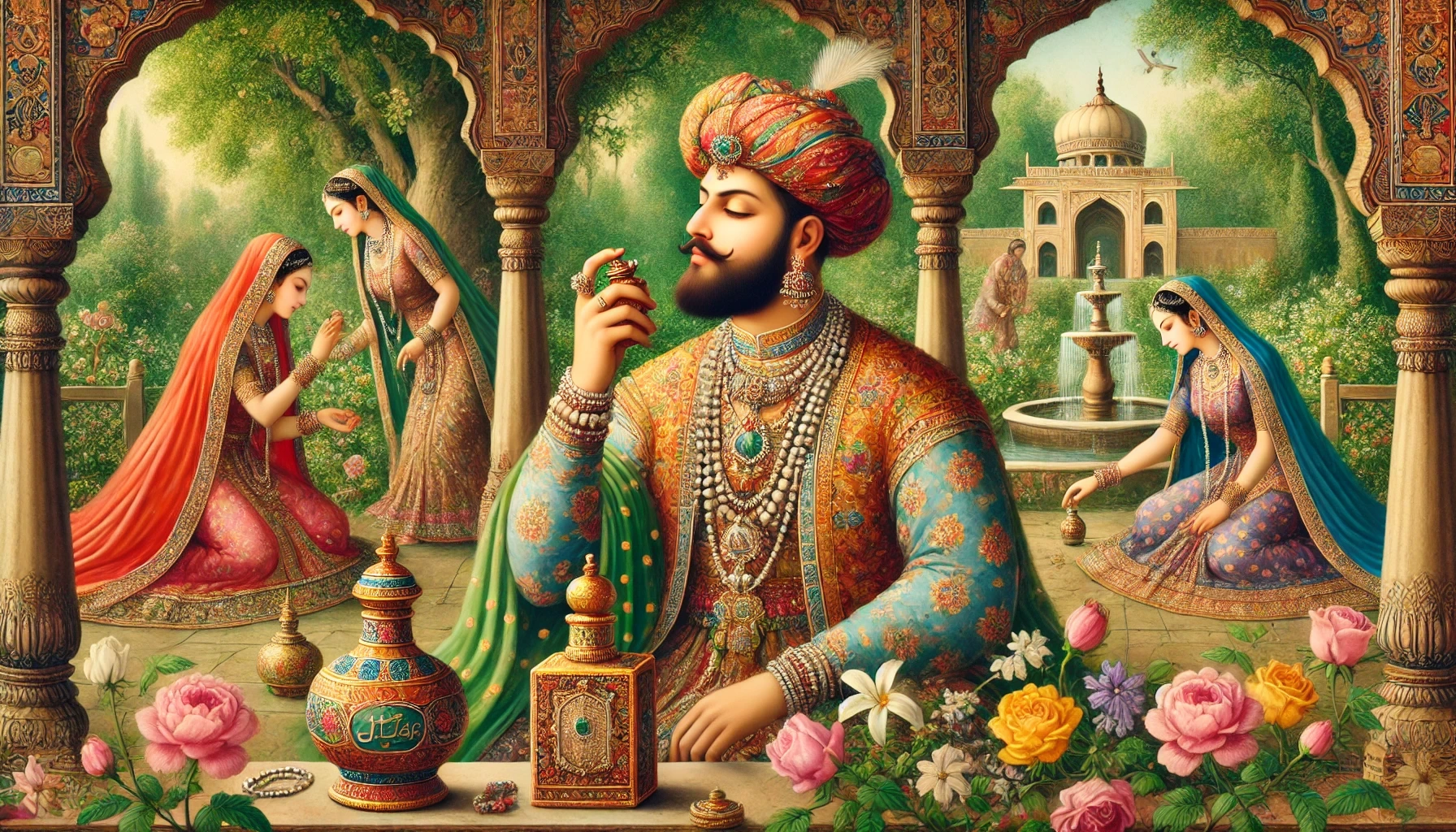
His son, Jehangir, took it a step further by establishing a dedicated department for the creation and trade of attars. Under his reign, Kannauj’s perfumes became coveted items throughout the empire. It was during this period that Rose Attar was supposedly born. According to legend, Noor Jahan, Jehangir’s wife, was enchanted by the scent of rose petals while bathing in Agra, sparking the idea of capturing this intoxicating fragrance in oil form. From there, the perfume industry in Kannauj Perfume City flourished further, with rose, jasmine, sandalwood, and other floral attars becoming sought-after luxuries for royals and nobility alike.
Modern shifts – The changing faces of attar
The arrival of the British in India marked the beginning of a gradual decline in Kannauj’s perfume industry. With the colonial administration came a preference for Western products, and British officials and the upper class started favoring imported European perfumes over traditional Indian attars. The local perfume industry, which had thrived for centuries, began to suffer. The British also altered trade routes and monopolized the production of many raw materials, making it harder for Kannauj perfumers to access the ingredients needed for high-quality attars.
Adding to this decline, during the 19th and 20th centuries, India’s emerging middle and upper classes sought to align themselves with Western tastes, further reducing the demand for traditional attars. By the late 1990s, the government restricted the sale of Mysore sandalwood, one of the key ingredients in attar production, causing the prices of attars to soar and making them inaccessible to many. To adapt, perfumers began using substitutes like liquid paraffin instead of sandalwood oil, but the newer versions couldn’t match the authenticity and richness of the original attars.
Despite these transformations, Kannauj remains a stronghold of this ancient craft. The traditional hydro-distillation method, introduced by Persian physician Avicenna in the 10th century, is still practised here. In fact, as part of efforts to revive and promote this craft globally, PM Modi, among a handful of handicrafts made by local artisans, gifted the French President a selection of perfumes in a Zardozi box crafted in Lucknow. The box contained Attar Mitti, Jasmine oil, Attar Shamama, Attar Gulab, Exotic Musk, and more. It’s remarkable how this age-old technique, using water or steam to extract essential oils from plants, has been refined and passed down through generations, keeping Kannauj’s perfume-making heritage alive.
Crafting scents – The art of Kannauj’s traditional attar-making
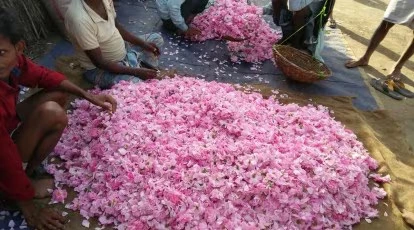
Pushpa led me to the heart of the perfume-making area, where the air was thick with the scent of crushed flowers. The first thing I noticed was workers meticulously clearing a sack of pink petals, which were then crushed to release their fragrance. Here, I learned that attar perfumes are created through an age-old process of infusing botanicals directly into sandalwood oil or water, allowing the natural oils to absorb and preserve the essence of the flowers. This results in a deeply concentrated scent that lingers for days, making Kannauj attars both potent and long-lasting.
The traditional process begins with the use of a copper cauldron, known locally as degh bhapka. The cauldron is placed in a furnace fueled by eco-friendly materials like cow dung and wood. As the degh heats up, the fragrance-laden steam rises and is transferred to a cooling chamber through a bamboo pipe, where it condenses into sandalwood oil stored in a smaller container, the bhapka. This method, using nothing but natural ingredients and copper vessels, allows the sandalwood oil to slowly absorb the essence of the flowers. Once the process is complete, the attar is stored in camel-skin bottles that naturally wick away any excess moisture. The distiller also seals any opening with wet multani mitti, a type of clay often used as a skin cleanser, leaving behind the purest form of fragrance.
This delicate craft has been passed down for centuries, and each bottle of attar carries the essence of both nature and tradition. It makes for one of the rare Indian souvenirs you can carry home to your friends and family! As I watched the process unfold, I couldn’t help but marvel at how this ancient technique remains so relevant and respected in today’s modern world.
Bottling up the essence of rain – The making of Mitti Attar
It’s not easy to replicate the smell of rain, and I couldn’t help but wonder—how does Kannauj manage to bottle that elusive, earthy scent? I had to know. I learned that while Kannauj perfume city boasts around 400 attar perfumeries, only about 10% of them specialize in creating mitti attar, according to the government-run Fragrance and Flavour Development Centre. The process begins with a distiller collecting kiln-baked clay discs from local potters, along with discarded clay materials like kulhads (traditional clay cups). These materials, weighing around 600 pounds, are placed into a large copper vat called a degh, filled with water, and sealed tightly.
Next, a long-necked copper vessel called a bhapka—filled with sandalwood oil, the base for all Kannauj attars—is connected to the degh through an angled bamboo pipe. The perfumer seals any openings with wet multani mitti (fuller’s earth) to ensure no steam escapes. The fire beneath the degh is lit using a combination of wood and sun-dried cow dung, and the clay inside the vat is left to simmer for nearly seven hours. As the clay heats up, an aromatic steam builds up and travels through the bamboo pipe into the sandalwood oil-filled bhapka, allowing the oil to slowly absorb the essence of baked clay.
The distillers carefully monitor the flames, adding more cow dung when needed to keep the temperature just right. This process is repeated every day for about 10 days until the thick sandalwood oil becomes fully infused with the deep, earthy fragrance that mimics the smell of the earth after a monsoon shower. The magic of mitti attar doesn’t happen overnight. As the distiller explained, “You won’t get any smell in one day. It takes at least four or five days to start getting the aroma.”
Breathing in the earth – My encounter with Mitti Attar
Our final stop on the mitti attar trail led us to a small, unassuming retail perfumery owned by Raju Mehrotra, a third-generation perfumer known for his unique three-thumbed hand. Sitting behind a soapstone counter, Mehrotra was surrounded by shelves packed with glass bottles and tins of every size, each brimming with oils and attars of all kinds: jasmine, champaca, rose, kewda, lotus, to name a few. It was a treasure trove of scents, many I had never even heard of.
But there it was—the mitti attar, standing in a small, inch-tall glass bottle on the counter. I carefully twisted off the little gold cap, closed my eyes, and inhaled deeply. The scent that filled my senses was unmistakably the smell of the Indian rain. It smelled like the earth itself—like parched clay quenched by rain after the first monsoon showers. This was not the rain I remembered from my own childhood in the gulf with its ozone-charged air. This was distinctly northern India: warm, organic, and mineral-rich.
The scent carried with it the story of waiting—waiting for a sandalwood tree to grow its fragrant heartwood, a process that takes over 40 years; waiting through four months of scorching, dust-filled summer in northern India before the monsoons bring much-needed relief in July.
And as rare as it is, mitti attar is not something you can find just anywhere. The price reflects its rarity and the craftsmanship behind it. 0.26 gallons of this liquid gold sell for a staggering 180,000 Indian rupees, or around $2,178. It can also vary from 40 rupees to 1,000 rupees for 10ml, depending on the base oil used. But there was something deeply comforting about this scent—its warmth, its natural earthiness—it was like the fragrance of a long-awaited reunion with the rain.
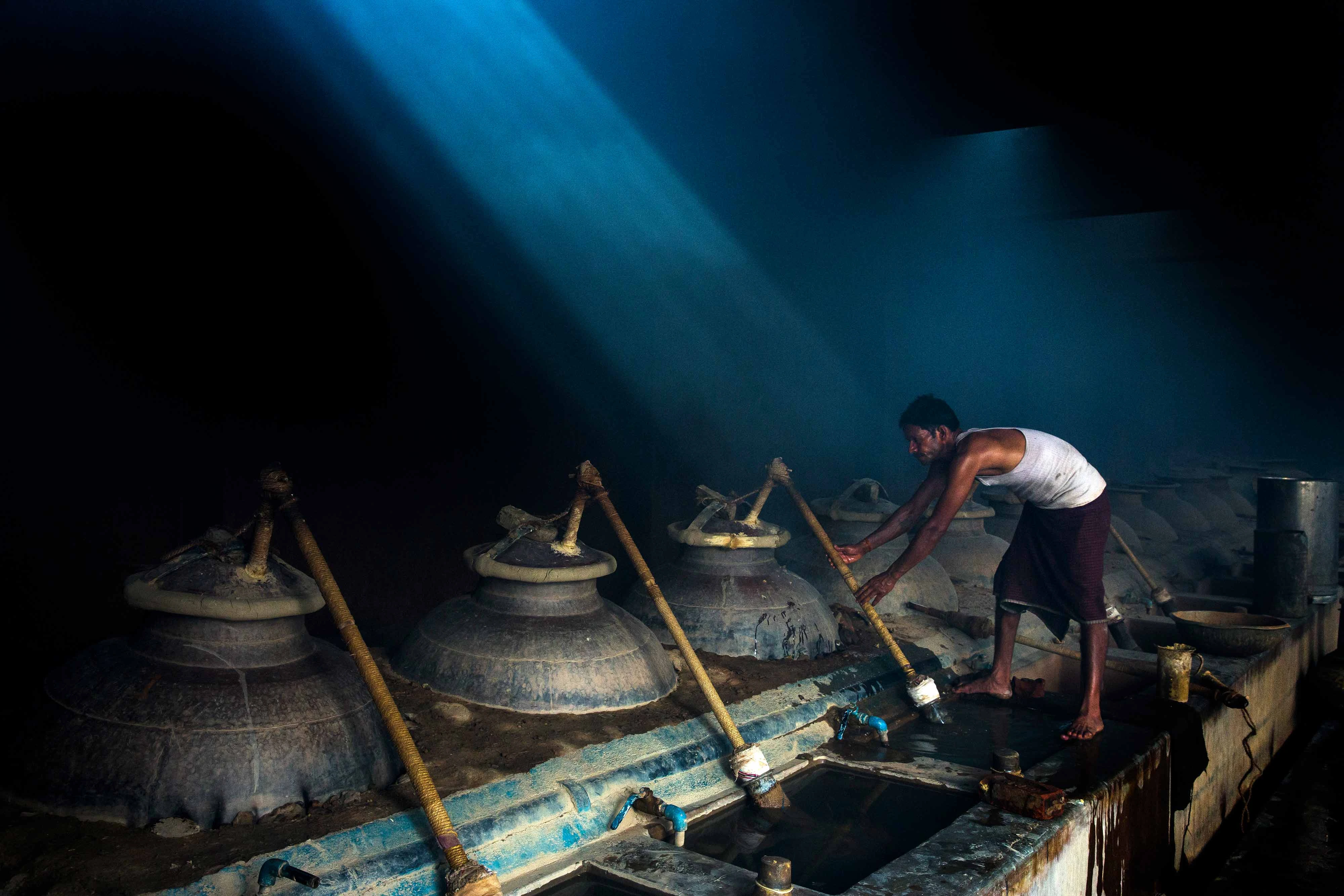
Must-try attars from Kannauj – Fragrances you can’t miss
While Mitti Attar is, without a doubt, my top recommendation, I couldn’t resist picking up a few more exquisite attars from Kannauj perfume city. Each one has a unique, captivating scent that’s both mysterious and alluring. Here are some that you must add to your collection:
Attar Shamama
Shamama Attar is a beautiful, herbal creation known for its rare, spicy, and rich aroma. What makes it even more intriguing is its “mysterious” fragrance, unique to every perfumer in Kannauj perfume city. With its spicy, herbaceous, and woody notes, it’s no wonder Shamama is highly appreciated, especially in Middle Eastern countries. What’s even more fascinating? The process of making this Kannauj attar is a well-guarded secret passed down through generations.
Rose Attar
Kannauj’s claim to fame started with this one—Rose Attar. Legend has it that Noor Jahan, wife of Mughal Emperor Jahangir, first discovered this fragrant beauty. It’s no surprise that Rose Attar is still one of the most sought-after perfumes, used in everything from cosmetics to candles. The scent is not only luxurious but also calming, often used in aromatherapy to ease anxiety and uplift the soul. Fun fact: it takes over 50 kilograms of rose petals to create just 10 ml of this precious Kannauj attar!
Heena Musky Attar
This one was a personal favorite. Heena Musky Attar perfectly captures the warmth and mysticism of henna, blending earthy, sweet notes with a sensual musk undertone. Every whiff of it reminded me of henna designs and festive celebrations, making it both nostalgic and modern at the same time.
Juhi Attar
If you love the delicate scent of jasmine, Juhi Attar will sweep you off your feet. This floral beauty captures the sweetness of jasmine at night, making it feel like you’re walking through a moonlit garden. It’s elegant, graceful, and leaves a lingering trail of floral richness wherever it goes.
Kadamb Attar
Kadamb Attar was like walking into a tropical garden. The delicate perfume of the kadamb flower, with its sweet, floral, and woody undertones, is refreshing and exotic. It’s the perfect way to experience the diversity of nature in a single bottle.
Mehndi Attar
Mehndi Attar truly captures the spirit of celebration, with its rich, spicy, and earthy notes that remind me of henna-covered hands during festivals. It’s warm, inviting, and evokes a sense of tradition and artistry, perfect for special occasions.
Mogra Attar
Mogra Attar was pure sophistication. With its pure jasmine scent, it filled the air with an enchanting floral fragrance that lingered long after. This Kannauj attar is all about grace and elegance, leaving behind a luxurious trail of white floral notes that are impossible to forget.
Each of these Kannauj attars has a story, a scent that transports you to a different time and place. Trust me, you’ll want to experience them all.
Recommended Attar shops to buy from in Kannauj
While exploring Kannauj perfume city, I came across several fantastic stores that will make your search for the perfect Kannauj attar much easier. All you have to do is book a Savaari cab from Kanpur, which is closer to Kannauj (Kanpur to Kannauj distance – 87 km) or Lucknow (Lucknow to Kannauj distance – 121 km). There are many options, and it can get overwhelming, but here are a few of my personal favorites:
- Puja Perfumery – Baba Gauri Shankar Road, Farsh Rd, Kannauj
- Meena Perfumery – Shankar Garh, Gauri Shankar Road, Farsh Rd, Kannauj
- Lala Jugal Kishore Mehrotra Perfumers – Gauri Shankar Road, Kannauj
- Kannauj Ittar – Shankar Road, near Baba Gauri, Kannauj
- Ali Brothers Perfumers – Haji Ganj, Safdarganj, Kannauj
The decline of natural perfumes and the fight to preserve Kannauj’s legacy
Fragrance has always played a significant role in Indian culture, whether it’s in wearing attars, lighting incense sticks, flavoring our food with spices and essences, or adorning our hair with fragrant flowers. Yet, despite this rich tradition, we have failed to preserve both these natural resources and the craft of natural perfumery.
Kannauj’s perfumers, once revered for their mastery of natural Kannauj attars, now face an uphill battle. One prime example is the near-impossible task of sourcing pure sandalwood, which has become scarce over the years. Another resource in rapid decline is spikenard, or jatamansi, a key ingredient in both perfumery and Ayurveda. In the Upper Himalayas, we’ve already lost about 60-70% of its reserves due to inadequate preservation.
In recent years, the quality of pure attars has plummeted, as synthetic alternatives have flooded the market. The demand for cheaper fragrances has pushed traditional players to the margins, with many manufacturers now mixing 75% pure oil with 25% synthetics. For many consumers, the lure of affordability has overtaken the appreciation for authenticity, and as a result, the market for pure attars has steadily declined. Today, attar makers not only compete with high-end designer fragrances but also with mass-produced, inexpensive deodorants.
For many, the solution lies in advocating for policy change, much like the successful campaign against single-use plastics. But while the road ahead may be long, as consumers, we can take action by choosing to invest in natural fragrance extracts over mass-market alternatives, many of which cost only a fraction to produce. The preservation of natural fragrances is more than a business—it’s a matter of safeguarding a heritage that has endured for generations.
Kannauj’s essence – From perfumes to ancient wonders and wildlife
After my visit to Kannauj perfume city, it was time to say goodbye, especially to Pushpa, whose knowledge and warmth made the experience unforgettable. With my hands full of the perfumes I had eagerly purchased, I settled into my cab, ready to explore more of Kannauj. My chauffeur, always accommodating, suggested a few local sights, and off we went.
Lakh Bahosi Sanctuary
Visiting Lakh Bahosi Sanctuary was a real treat for me, especially since I’m a bit of a nature lover. It’s one of the largest bird sanctuaries in India, and if you’re there during winter, you’re in for a spectacle. Watching migratory birds from all over the world was simply mesmerizing. For anyone who enjoys photography, this is the perfect spot to capture some rare and beautiful bird species in their element.
Archaeological Museum
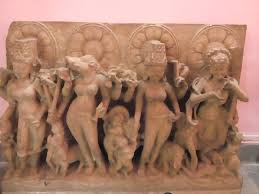
As someone who’s always been fascinated by Kannauj history, I couldn’t resist stopping by the Archaeological Museum. The clay models on display, dating from the Mauryan to the Harsh Age, really drew me in. They beautifully depict the ancient cultures of Mathura, Kashi, and Kaushambi, all connected through Kannauj history. It’s a must-see if, like me, you enjoy diving into the past.
Siddheshwar Temple
Siddheshwar Temple was an unexpected highlight of my trip. Nestled by the River Ganga, this temple has been a spiritual haven for over 500 years. If you’re lucky enough to visit during Sharad Purnima, the place comes alive with fairs, aartis, and people taking holy dips in the river.
Local food of Kannauj
Kannauj’s food scene was another surprise. I couldn’t get enough of the authentic Awadhi and Mughlai dishes. From bedmi poori (a lentil-infused poori) to sagpaita (a wholesome dal and vegetable mix) and rasaje (a vegetarian gram dish), every meal felt like a discovery. The local dhabas and restaurants in the market were perfect for indulging in these regional flavors.
A sweet surprise – Kannauj ka Gatta
Gatta is a unique sweet made of sugar and rosewater, and its flavour is as fragrant as the perfumes that made this city famous. What makes gatta stand out is its delicate, mouth-dissolving texture. The best gatta melts the moment it touches your tongue, a moment of pure bliss that embodies the fragrant essence of Kannauj itself.
Unearth the wonders of Kannauj with Savaari
I owe a lot of my smooth and enjoyable trip to my Savaari driver. He patiently waited while I explored and even suggested some must-visit spots, making the day much easier and more comfortable. Loading the cab with all the souvenirs I bought was a breeze, thanks to the spacious trunk. Loading all the souvenirs I bought was effortless, thanks to the spacious trunk and the driver’s help in handling my luggage, so I didn’t have to lift a finger.
If you’re ever heading to Kannauj perfume city, I highly recommend booking an hourly car rental by downloading the Savaari app. It made my trip so much more relaxing, and I got to explore the city at my own pace—taking in all its scents, history, and those sweet surprises. The best part is, that you can always be flexible with your itinerary and take a road trip to Lucknow, as Kannauj to Lucknow distance is only 121 km! So carpe diem and make the most out of your road trips to and from Kannauj perfume city with Savaari.
Last Updated on December 13, 2024 by blogadmin






